How To Buy A Dental Handpiece – A Buying Guide!
Just take a moment and picture your dental practice without the modern dental handpiece. Imagine cutting through the hardest substance in the body only with the use of hand instruments. It’s probably impossible to imagine.
The significance of the dental handpiece in running a dental practice is a universally known fact. Whether you are an orthodontist, endodontist, a general practitioner or any other specialist, the handpiece is something that is employed every day for a wide range of dental procedures.
Here is a glimpse of the evolutionary process that resulted in the modern day dental handpieces:
- 1864 – George Fellows Harrington, invents the clockwork dental drill. He names it Erado.
- 1868 – George F. Green invents the pedal operated, pneumatic dental drill. The air generated is used to spin the turbines that result in a rotary cutting action.
- 1875 – Green patents the first electric dental drill.
- 1949 – John Patrick Walsch patents the air turbine handpiece.
- 1957 – Bordon Airotor, the air turbine handpiece is manufactured and distributed in the USA.
- 1973 – The first high-speed handpiece with fiber optic illumination is introduced.
Making your handpiece purchase can be a bit confusing with so many brands and advancements that keep coming in every day. We have collated a few key points and have come up with a how to buy dental handpiece guide.
Things to consider before you buy dental handpiece
Air vs Electric
In today’s world, there are two types of handpieces that are most commonly used – air-driven and electric. Each of the types of handpieces can fulfill a different kind of need in your dental practice. So, whether one is better than the other, cannot be a fair argument, as it entirely depends on the clinician, the dental practice and the type of dental treatment procedures that are performed. Since both types of handpieces offer various advantages, it is wise to use both variants for procedures that they are best suited for.
| Parameters | Air Driven Handpiece | Electric Handpiece |
| Speed | Upto 200,000 rpm | Between 250,000 rpm and 420,000 rpm |
| Torque | Variable | Constant |
Concentricity
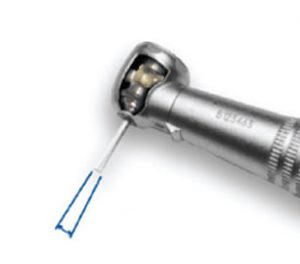
Concentricity is the ability of the dental bur to tightly spin on its axis. As the concentricity becomes lower the bur tends to wobble as it spins. A handpiece with exceptional concentricity will have a reduced bur wobble.
In air driven handpieces the turbine undergoes wear and tear and might result in compromised concentricity or spin.
Weight
Electric motors incorporated into the electric handpieces make them heavier. Air turbines are generally lighter than their electric counterparts. The weight of the handpiece has a major role to play in ergonomics. A lighter handpiece helps the dentist to perform treatment procedures seamlessly. Newer models of electric handpieces are aimed at being lighter to reduce fatigue that is caused throughout the day.
Ergonomic design of the equipment that is used most often by any dentist is of monumental importance. Bad ergonomics for a long period of time can result in health issues such as Carpal Tunnel Syndrome.
Noise
It’s safe to say that most patients who are afraid of dental treatment cite the handpiece or the “dental drill” as the primary reason for their fears. To overcome this problem, audioanalgesia was introduced as a technique increase patient comfort during dental procedures. Since this is one of the primary factors that dictate overall patient experience, the noise generated by the handpiece should not be overlooked.
Since the air driven handpieces use compressed air to rotate the turbines, there is a considerable amount of noise that is generated during the process. The base connection type of the handpiece can have an effect on the amount of noise that is generated during the procedures.
The two common types of tubing connections that are available for the dental airotor are as follows:
2 Hole (Borden Connection)
There are two holes in the coupler and the base of the airotor. The larger one is for air intake, which is used to drive the turbine to spin, and the small hole for water. Since there is no air exhaust, the air blows directly out of the handpiece, which makes it louder.
4 Hole (Midwest Connection)
In this type of connection, two larger holes are present, one for air entering the handpiece and the other to serve as an air exhaust. The two smaller holes function as a water tube and a chip air tube. The chip air tube ensures that there is a fine mist of water to cool the bur and clean debris, rather than a stream of water that is mostly seen with 2 hole connections.
Electric handpieces are much quieter than air driven handpieces. They also exhibit lesser vibration which has a desirable effect on stability and ergonomics. The newer handpiece models have reduced the noise generated to a range of 58 to 71 decibels (dB).
Speed & Torque
Air driven handpieces can easily reach higher speeds greater than 300,000 rpm. They offer excellent torque as well. However, the torque offered by an air turbine can be compromised when it comes to working with dense materials such as zirconia or gold, which would slow the handpiece down as well.
In electric handpieces, the speed is limited to a maximum of 200,000 rpm (approx). Electric handpieces maintain a consistent torque and power irrespective of the material that you are cutting through.
Handpiece Design & Grip
During the manufacturing process, it is important to maintain a decent grip on the handpiece while making it smooth enough to ensure optimal cleaning. The finish of the handpiece should be compatible with the type of gloves that you normally use. A handpiece that does not offer adequate grip can significantly affect performance.
Head Size
The size of the head of the handpiece can be crucial for visibility of the working area. A small sized head can improve visibility and access, especially when carrying out dental procedures in the posterior region. Handpieces with a larger head size have a larger turbine impeller with increased inertial mass. This can augment the power output of the handpiece which decreases the time taken for preparation. The head sizes of commonly used handpieces are:
| Head Sizes | Dimensions |
| Full-Size | 14.5 mm x 13.0 mm |
| Mid Size | 11.9 mm x 10.2 mm |
| Miniature | 9.8 mm x 8.5 mm |
Torque Control
A major advantage of some electric handpieces is that they allow you to change the torque settings. With this advancement, these handpieces can be used to carry out various procedures including endodontic treatment.
Gear Ratios
When talking about electric handpieces, the gear ratio indicates the suitable procedures that can be performed using the handpiece. The common gear ratios are 1:5 and 1:1.
1:5 gear ratio offers higher speed and can be used in procedures such as cavity preparation and crown cutting.
1:1 gear ratio is a slower speed variant that is suitable for refining preparation, caries removal and adjusting ceramics.
Do you need a spare?
It is always advisable to be prepared for the worst case scenario. Although good quality handpieces can serve you for a long period of time, they definitely have the risk of failing to give you the best output. If the repair and service of your handpiece take a few days, the dental practice can seem debilitating until it is back.
As a contingency plan, you can invest in a spare handpiece of your choice. This spare handpiece can be used in rarity and would be greatly useful when your main unit is not functioning or needs servicing.
The ancient dentist, Hesy-Ra, used a bow drill to drill into the teeth of his patients. The luxury of air turbines and electric handpieces have made the dental profession far more effective and less time-consuming. From buying a dental handpiece to setting up your whole dental clinic the PinkBlue.in team aims to help improve the efficiency of your dental practice in every way possible, and this blog is a small step towards achieving that endeavor. Hope this cleared a few doubts on how to buy dental handpiece.
Anything else that you need to know before you buy a dental handpiece? Share it with the dental community in the comments section!

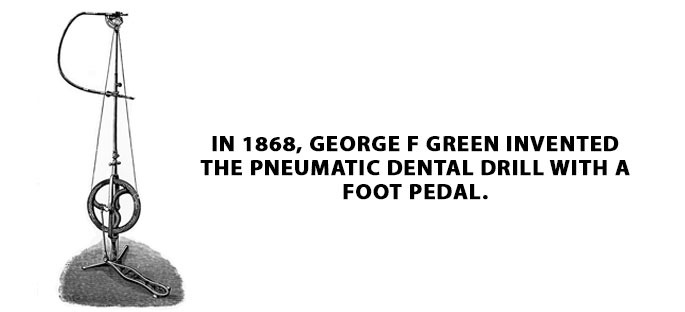
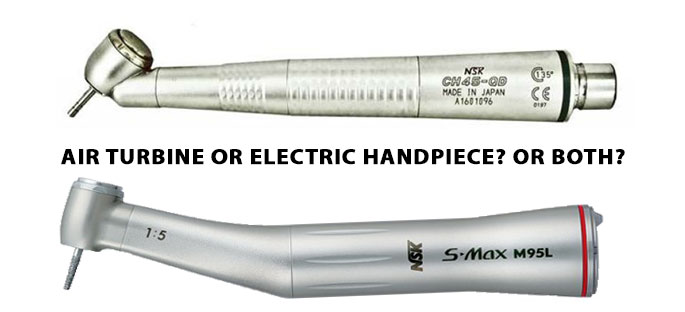


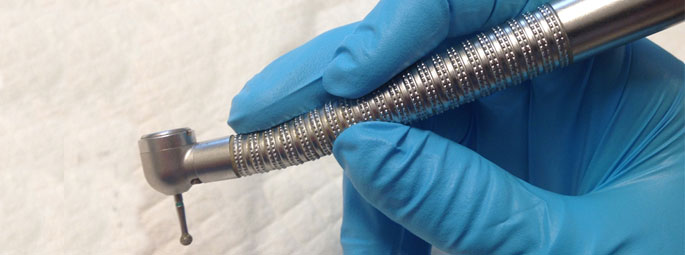
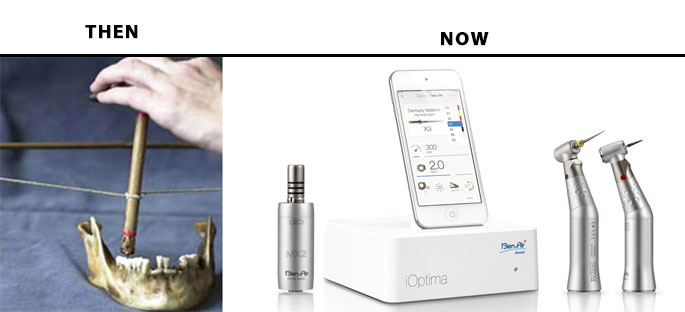
i want air motor & hand pice
Hello Doctor,
You can find a wide range of airotors and micromotors at this link – https://pinkblue.in/equipments/small-equipments/handpieces.html
Nice article
Thank you 🙂
Nice article Dr
Thank you Dr Deepak
Dear Dr Surya, Will you please guide as to what Gear ratio gives better torque when drilling in bones for Implants 4:1, 1:1, 1:4, etc. Thanks
Hello Dr Mansuri,
When performing root form implant surgery, reduction handpieces are preferred, as opposed to speed increasing handpieces that are used in blade implant surgeries.